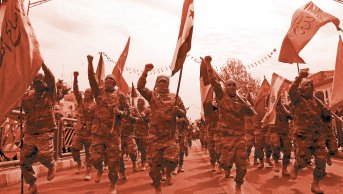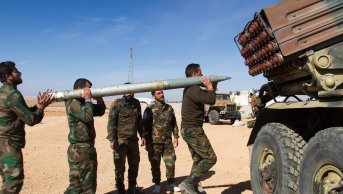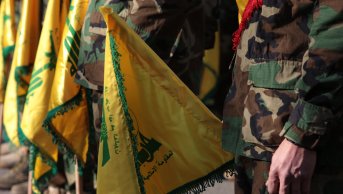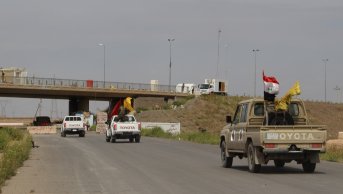The Idlib Operation of the Fatah Army and Its Probable Outcomes
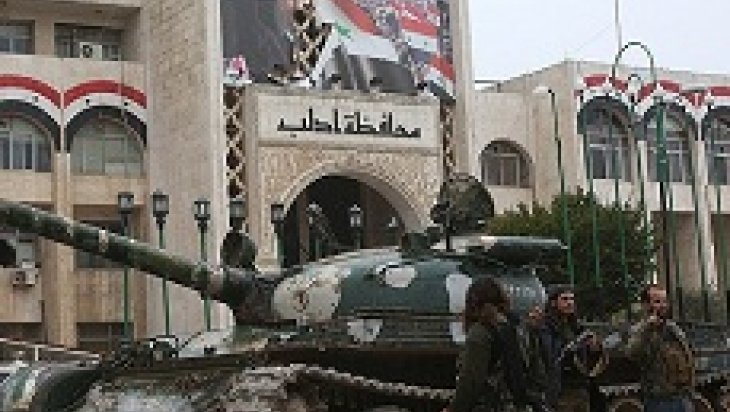
The opposition armed groups captured Idlib in March 2015, which is the second major provincial center that the opposition has taken from the regime, approximately two years after the capture of Raqqa in March 2013. New questions emerged about the Syrian theater of war, since the capture of a major provincial center took place in the beginning of 2015, after the year 2014, in which there were comments about the ISIS advance at the expense of the opposition and the Assad regime’s favorable position in the war –which are deceptive and erroneous. What is the significance of Idlib for both sides of the conflict? What is the profile of the groups that captured Idlib? What is to be expected in the short and medium term after the capture of Idlib?
The province of Idlib, neighboring Turkey alongside Latakia and Aleppo provinces has been a contested area for the opposition and the regime since the first year of the civil war in Syria. Harem in the northern part and Maarat Numan in the south were the areas under the opposition control. The city center of Idlib, though, was controlled by the regime forces until March 2015. How it came to pass and the center of Idlib fell to the opposition? Or was it really a “sudden” development or a “surprise”?
The ISIS’s Ouster from Idlib, Frictions among the Opposition, and the Regime’s Losses in the Rural Idlib
The year 2014 has witnessed the shifting of balance in the Idlib theater of war. From the first days of 2014 onwards, the intensity of fighting between the ISIS and various opposition groups in the north of Syria resembled that of a regional war. In this period of intense fighting, which caused more than 5,000 casualties in six months only on the opposition side, the ISIS fought the opposition off the rural Deir-ez-Zor and the city center of Raqqa, while the opposition drove the ISIS from the west of Aleppo, the rural Idlib and Latakia. The ouster of ISIS from the rural Idlib removed an internal threat among the opposition and made potential alliance agreements possible.
After the removal of the ISIS from the area, the opposition forces were engaged in a lower intensity of fighting among themselves in the north of Idlib. The US-backed Syrian Revolutionaries Front (SRF) and the Syrian al Qaeda branch, the Nusra Front made their bids for regional dominance. Jamal Maarouf, the leader of the SRF, harshly blamed al Jawlani, the emir of the Nusra Front for being a “Kharijite” and “acting on behalf of Iran and the regime”. In contrast, the Nusra Front responded by claiming that the SRF is an “American pawn against the growing power of Islamic movements in the region”. Tense relations between the Nusra Front and the SRF collapsed into fighting in the last months of 2014. The fighting at the end of October lasted only a few weeks and the Nusra Front shattered the SRF control in Jabal Zawiya and captured fortifications and villages. Mediation attempts by the Mujahideen Army, Failaq al-Sham, Islamic Front and some FSA groups provided that the intensity of fighting and casualties remained lower. Though, the Nusra Front acquired dominance in the north of Idlib, after its capture of the SRF positions and weapons.
In the same period, the Nusra Front carried out the first major assault towards the Idlib city center. Even though, the regime forces defeated this assault at the end of October, the weakness of its defense lines were exposed since the Nusra forces were able to penetrate quickly and capture two buildings. The Shiite militias backed by Hezbollah and Iran were in Latakia and Hama, therefore only the forces of Assad regime were defending Idlib. The fact that army units lacked both discipline and fresh reinforcements benefited the Nusra Front greatly. Opposition forces pressed their advantage and initiated a great assault with thousands of fighters and captured the military bases in Hamidiyyah and Wadi al Daifin December 2014, shattering these significant positions in the regimes Idlib defenses. In the operation, FSA groups and Failaqal-Sham attended alongside the Nusra Front and Ahrar al Sham.
The Army of Fatah and the Idlib Operation
Having defeated the regime’s assaults on Aleppo in the last months of 2014, the opposition forces started preparations for a joint assault on Idlib, similar to those they had contacted in Aleppo. There were rumors at the end of March that the opposition would join together under the Army of Fatah and conduct an operation to “liberate” Idlib. Mostly Liva Tevhid militias under the Islamic Front, the Mujahideen Army, Nureddin Zengi Brigades, Asala and Tenmiyye groups came together under the “Levant Front” and fought to ward off the regime’s attempts to encircle the opposition control zones in Aleppo in December 2014. This initiative has been instrumental in stopping the regime’s advance and the opposition’s defense in Handarat, Hardatnin and Rityan fronts. In Idlib, the Army of Fatah, which is larger and more extensive than the Levant Front has been launched. The Army of Fatah is the military organization that brought together seven opposition groups under a unified command and conducted the Idlib operation. This joint structure is presented as the organization that will deal with the administration of Idlib and launch new operations, besides being the sole body that has carried out the entire planning and conduct of the operation (timing, intensity of the assault, fronts, etc.). The largest stakeholder in the Fatah Army is the Ahrar al-Sham group, which is the strongest faction in the north of Syria after its merger with the Suqour al-Sham. Other than that, the Nusra Front and Failaq al-Sham -that has affinity towards the FSA/Ikhwani position- are prominent members in the Fatah Army. Besides these three, the Fatah Army includes Jund al-Aqsa (known for its fighters from the Caucasia), Ajnad al-Sham, and smaller scale Islamist groups such as Jaish al-Sunna and Liwa al-Haqq.
Simultaneous attacks from the Ahrar al-Sham-led groups in the east and the Nusra Front from the north shattered the regime’s defense lines, which were already weakened. The Fatah Army moved to the positions towards the urban center such as Binnish district, Mihrab square and Idlib industrial quarter. On March 28, the opposition declared that the center of Idlib has been liberated by the opposition groups. Thus, the operation, which was launched on March 23 and intensified on March 25, was concluded on its fifth day with the capture of the city.
The Parties’ Next Steps and Probable Outcomes
Even though Idlib is not a large metropolitan center unlike Aleppo and Hama, its loss inflicted a significant psychological blow for the regime. Even the regime’s own support base might question the failure of both the Syrian Army and the National Defense Forces (Shabihas) against the opposition and ISIS in the fronts where the Iran-backed militias and Hezbollah are not present. Having spent a great deal of effort and suffered great losses in its attempt to encircle Aleppo, the regime fights against FSA in Daraa as well. For the Baath regime, which allegedly has problems about manpower, and implements harsh recruitment measures, an extensive operation to retake Idlib might seem an untimely burden. It is not quite likely that the Damascus government will launch a full scale operation towards Idlib at a time when there are intense clashes in Aleppo and Daraa, and a high risk of assault from the rural Hama. Besides, it is important to point out that air strikes against Idlib will cause further immigration from the already diminished city center and it is likely that Turkey will receive a new refugee wave.
The opposition has tested and proved that joint command and operations has a high chance of success against the regime forces. Thus, joint operations method that the opposition has experienced frequently in the last year might evolve into combined armies and joint extensive operations. Combined opposition forces’ efficiency and resistance in Aleppo and Idlib might influence the opposition forces in Damascus and Daraa to adopt the same methods. Joint operation command is already seen in Ghouta too, which shows that Syrian opposition is getting accustomed.
Another benefit of the Idlib operation for the opposition is a possible external support. Syrian opposition, which was criticized for its fractured state, achieved success in unity, which might encourage foreign actors that have a tendency to support anti-Baath movements. However, the fact that the Nusra Front is a member of the Fatah Army will limit supports and arouse suspicions. In other words, the Nusra Front’s activities in Idlib will affect the external support that other groups might receive. From this perspective, there are claims that the new administration of Idlib will have 4 Nusra Front members, compared to 9 Ahrar al-Sham members, which should be taken into consideration for contemplating the future of Idlib.

